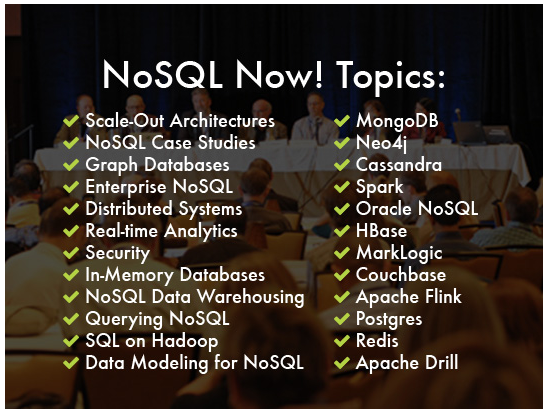A pair of posts that you may find amusing on the question of “free” and “cheaper.”
HBase is Free but Oracle NoSQL Database is cheaper
When does “free” challenge that old adage, “You get what you pay for”?
Two brief quotes from the first post set the stage:
How can Oracle NoSQL Database be cheaper than “free”? There’s got to be a catch. And of course there is, but it’s not where you are expecting. The problem in that statement isn’t with “cheaper” it’s with “free”.
…
An HBase solution isn’t really free because you do need hardware to run your software. And when you need to scale out, you have to look at the how well the software scales. Oracle NoSQL Database scales much better than HBase which translated in this case to needing much less hardware. So, yes, it was cheaper than free. Just be careful when somebody says software is free.
The second post tries to remove the vendor (Oracle) from the equation:
Read-em and weep …. NOT according to Oracle, HBase does not take advantage of SSD’s anywhere near the extent with which Oracle NoSQL does … couldn’t even use the same scale on the vertical bar.
SanDisk on HBase with SSD
SanDisk on Oracle NoSQL with SSD
And so the question remains, when does “free” challenge the old adage “you get what you pay for”, because in this case, the adage continues to hold up.
And as the second post notes, Oracle has committed code back to the HBase product so it isn’t unfamiliar to them.
First things first, the difficulty that leads to these spats is using “cheap,” “free,” “scalable,” “NoSQL,” etc. as the basis for IT marketing or decision making. That may work with poorer IT decision makers and however happy it makes the marketing department, it is just noise. Noise that is a disservice to IT consumers.
Take “cheaper,” and “free” as used in these posts. Is hardware really the only cost associated with HBase or Oracle installations? If it is, I have been severely misled.
On the Hbase expense side I would expect to find HBase DBAs, maintenance of those personnel, hardware (+maintenance), programmers, along with use case requirements that must be met.
On the Oracle expense side I would expect to find Oracle DBAs, maintenance of those personnel, Oracle software licensing, hardware (+maintenance), programmers, along with use case requirements that must be met.
Before you jump to my listing “Oracle software licensing,” consider how that will impact the availability of appropriate personnel, the amount of training needed to introduce new IT staff to HBase, etc.
Not to come down too hard for Oracle, Oracle DBAs and their maintenance aren’t cheap, nor are some of the “features” of Oracle software.
Truth be told there is a role for project requirements, experience of current IT personnel, influence IT has over the decision makers, and personal friendships of decision makers in any IT decision making.
To be very blunt, IT decision making is just as political as any other enterprise decision.
Numbers are a justification for a course chosen for other reasons. As a user I am always more concerned with my use cases being met than numbers. Aren’t you?



